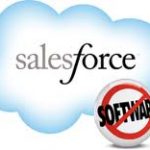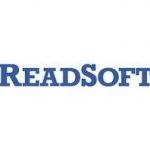“How Much Does That Cost?”
A natural question customers always ask is, “How much does that cost?” Unfortunately, too often sales people answer incorrectly, responding with, “The price is……….”
Cost and price are very different! If we answer with our price, we’ve immediately transformed the conversation into a pricing discussion. The end of this conversation is always the level of discount you’ve provided. We totally miss the opportunity to really talk about costs when we shift the conversation to pricing.
“How much does that cost?” It’s a different question, with a whole range of different answers. We can use these answers to transform the discussion into one about value.
What’s the cost of doing nothing? There are costs of implementing our solutions. But the cost of doing nothing is always higher than implementing our solutions (or we are really off base).
“How much we help you save,” is a powerful conversation because it focuses on improvement. The discussion changes from what they have to spend to what spending that money produces for them
“We help you make more money,” is even more powerful. Organizations are hungry for revenue and profits. The “How much does it cost” question is an opportunity to focus on improving sales, reducing expenses, improving quality, improving their customer satisfaction, improving the productivity of their people, improving their market penetration, and ultimately improving share price.
“How much does that cost,” may be followed with, “that’s more than the alternatives.” If we respond by saying, “What are you willing to pay,” we again have moved the discussion into pricing. Our prices are only one element of the costs the customer must evaluate in comparing our solution to the alternatives.
We have to look at a number of things in comparing our costs to those of the alternatives. Frequently, our price compared to the alternatives is the smallest element of the cost. Things like total cost of ownership, risk, time to results, and other factors are important in looking at cost.
This morning, I was speaking to a procurement manager. He spoke about this very issue. One of his people recently purchased the “lowest price” product. It ended up being much poorer in quality. When customers would buy his company’s products, this specific part had a high failure rate. Not only did they have to bear the warranty costs of replacing the product, but they have very unhappy customers who were switching to other suppliers. The resultant “cost” to this manager’s company was millions of dollars–what they saved on price was $10′s of thousands over a year. Clearly the purchasing person had made a serious error, focusing on price, rather than risk, opportunity cost, customer satisfaction and other issues. The cost of the lower priced alternative ended up being $ millions more than the higher priced solution.
Customers are worried about costs, not price. Make sure when they ask you about “How Much Does That Cost,” you respond to their question, not just tell them your price.
************************
Dave Brock – CEO Partners in EXCELLENCE
Dave formed Partners In EXCELLENCE, taking a unique approach to providing consulting services. Partners In EXCELLENCE collaborates closely with clients to develop and execute high impact strategies and programs in these areas. The company further distinguishes itself by supporting its clients in the implementation and execution of the strategies. The approach leverages lean and agile principles, driving radical simplification, and accelerating time to results.










